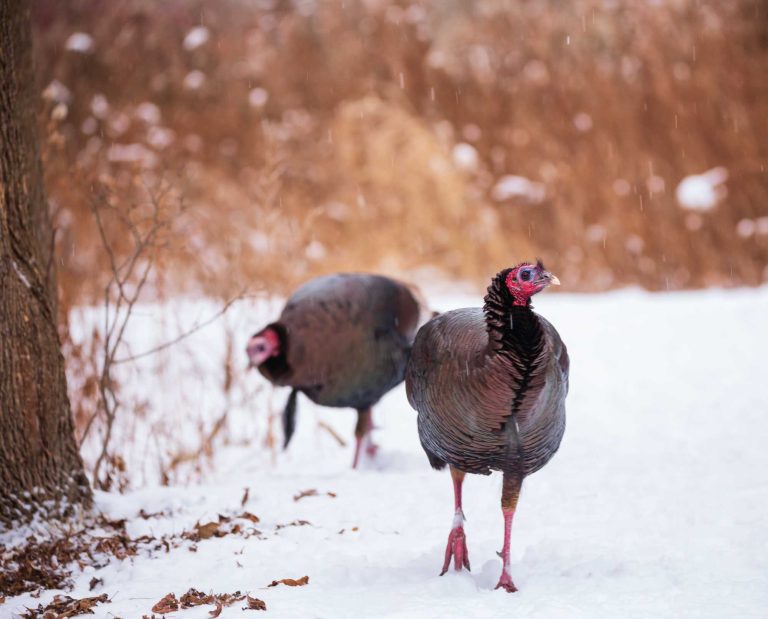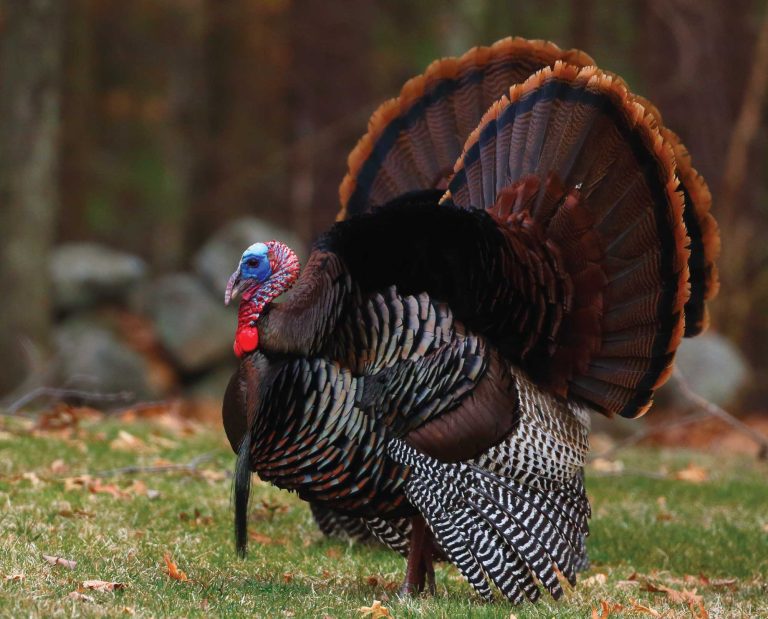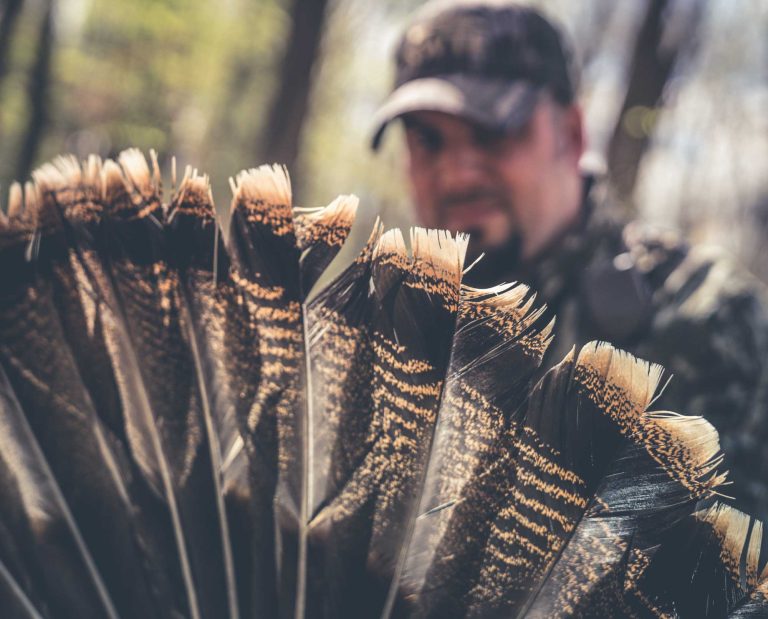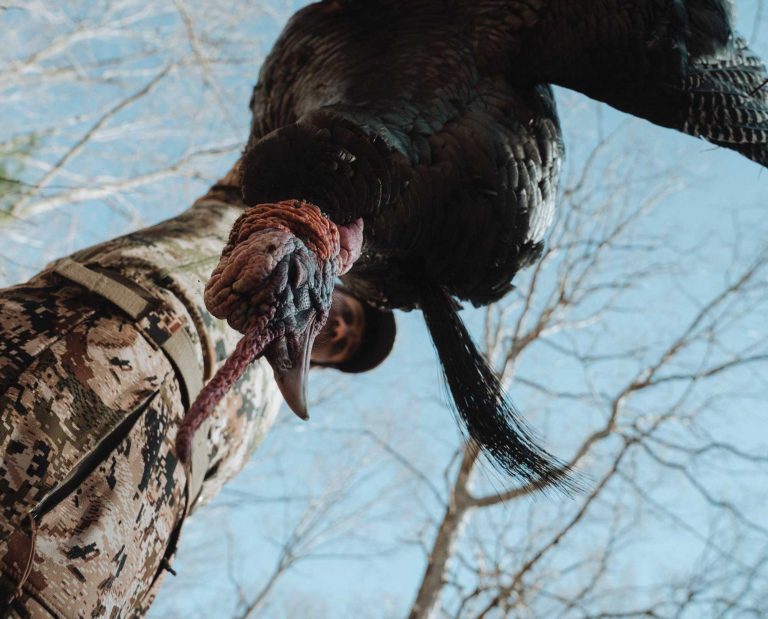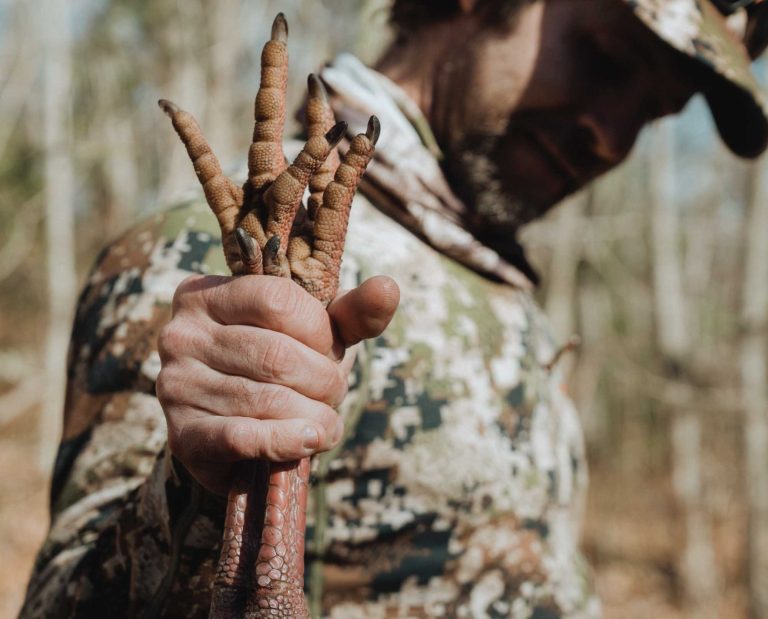When, How and Why to Use a Ground Blind for Turkeys
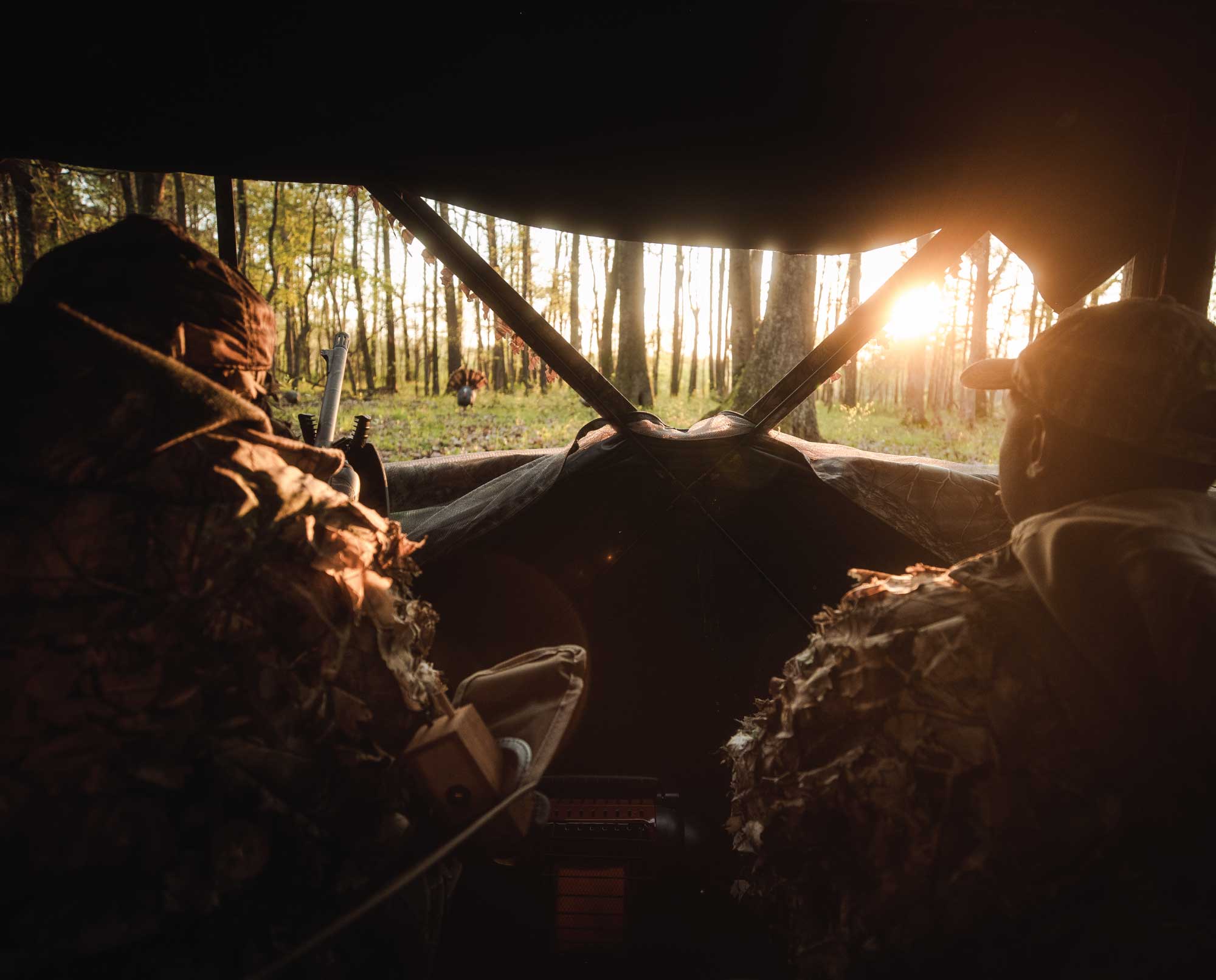
Understanding when to use a ground blind while hunting turkeys
While the turkey hunter will encounter many different challenges, one thing remains the same: turkeys can be pursued in a plethora of ways. The most common attack route is a field-edge set up with some brush for cover, sitting extremely still, and utilizing a mouth call. Then there’s the running-and-gunning turkey approach where the hunter walks around after the morning fly-down, blindly calling in hopes for a response from a fired-up gobbler. A quick crouch and backing up to lean against the nearest tree is often how this setup ends. Then there’s hunting from a ground blind.
Many hunters feel that hunting from a blind offers the lowest percentage of chances for a shot at a tom. But when the situation is right, hunting from a ground blind can be absolutely deadly. And it’s also the perfect way to introduce a novice or young hunter to turkey hunting.
When a ground blind is appropriate
On private land, blinds can be absolutely deadly. Setting up a blind well before the season opens and allowing the birds to get used to it being there is vital. If birds have been successfully scouted and are using an area heavily — and as long as they don’t change their routine when the blind is placed — they’re in trouble come opening morning. The key is getting the blind out without interrupting the bird’s routine. Be sure to set it off to the side of the area they’ve been frequenting, not right on top of it.
On public land, setting a blind in an area close to the turkey roost can be tricky. But it’s worth it on cold mornings or if you’ve got a youth hunter in tow. Blinds allow hunters to move around without being noticed. Youth hunters don’t like to sit still for hours on end, and they can easily be turned off to turkey hunting if they’re not comfortable. A blind allows them to move around, snack, point, talk, and enjoy the experience. It also keeps the elements out, making them more comfortable. If you’re going to set up near the roost, you’ll need to scout the area well and figure out the easiest way to slide in with a blind, while not being discovered during set up. I prefer to set the blind up out of sight, then walk it slowly into position from inside of the blind.
Another good option when setting up near the roost is to hunt later in the day, hoping to catch birds headed to bed. Since many states have hunting hours cut off before the time that birds push heavily onto the limb, being set up along their travel route is your best chance in this situation. Setting up early is important, allowing you to find a good place to set up the blind in peace and out of sight of the eagle-eyed turkeys. And since you’re going to be set up semi-early, you won’t have to worry about cramping up while leaning against a tree; instead, you can bring a comfortable camp chair with a small cooler to keep snacks and drinks on hand.
Ground blinds also prove their worth in inclement weather. Birds don’t stay in bed when it’s cold, windy, raining or snowing. They still need to feed, strut, and move around. Let’s be honest: we all love being comfortable, and a ground blind gives a hunter the best chance at being comfortable in the field. If you’re hunting in the wind, be sure to utilize the ground stakes that are provided with most blinds, or buy some if they weren’t included with your purchase. Nobody wants to chase a ground blind across a muddy corn field on a windy day.
In the age of technology, more people are filming hunts than ever. There’s no better way to film a good turkey hunt than from a ground blind. Camera movements can be made easily and interactions between the cameraman and hunter are undetectable. Most blinds offer more than enough room for a hunter, cameraman, and a camera on a tripod.
Not all ground blinds are created equal
Today’s selection of blinds range from small 180-degree 24-inch blinds with stakes for concealment, to oversized pop-ups made to help hunters with a disability or full production filming crews. As a hunter, you’ll need to do your homework on which type of blind is best for you. Size and weight are two things to consider. Camo patterns, windows for shooting and visibility, fabric, hub quality, and how the blind sets up and tears down are other things to consider. With size, be sure to look at the packable size and weight as well as the set-up size if you’re going to be toting it on your shoulder to get it in and out of your hunting spot. If you’re setting up the blind on private land, then packable size and weight might not be an issue, and durability is more important. Some full-sized blinds pack up so light and small that they can be tethered to a backpack. Others are built strong enough to withstand being left in the elements year-round. The options are endless, and there’s a blind out there for every type of hunter and every type of situation.
While there are literally hundreds of blinds on the market to choose from, one of them stands out in nearly every category. The Primos Double Bull Surround View is the first blind without a blind spot, constructed with exclusive one-way see through walls that let you observe all of your surroundings without being seen. Now you can spot all of the movement you’d miss with traditional blinds, yet remain just as concealed. The mesh fabric, when painted black, is completely see-through. When painted with the Primos Truth camo, it cannot be penetrated with the naked eye. The blind comes in three configurations: the Surround View 360 allows 360 degrees of visibility, and comes with one black panel that can be placed on any wall of the blind as a blackout backer. The Surround View 270 allows 270 degrees of visibility, with a blackout wall on one side. Last in the lineup is the economical Surround View 180, which has 180 degrees of visibility with blackout walls on two sides.
Ground blinds allow you to be versatile
As a turkey hunter, you owe it to yourself to have every advantage you can in the field, and having a ground blind at your fingertips is often your best option. Be open to taking a new hunter out this spring, and start them off in the comfort of a ground blind. Be it a young child who doesn’t like to sit still, or an adult you’re mentoring, a blind can help you allow them to learn without being busted by your prey.



